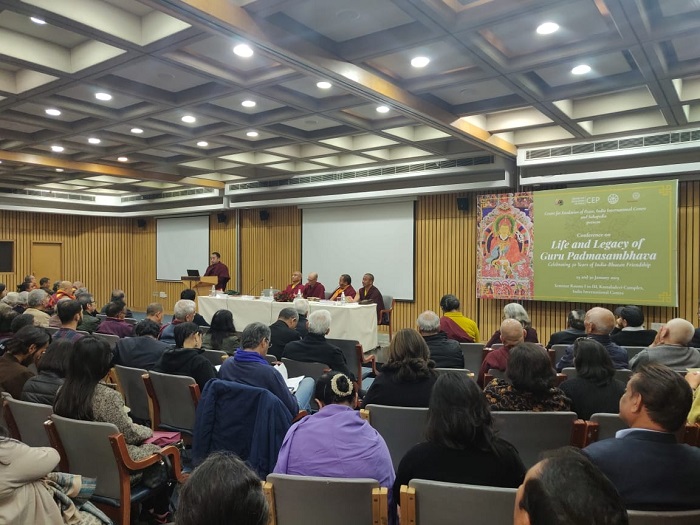New Delhi, To celebrate 50 years of diplomatic relations between India and Bhutan, an exhibition of rare thangka paintings, sculptures and photographs associated with Guru Padmasambhava, an iconic Buddhist figure, opened here on Tuesday.
The exhibition that celebrates his life and legacy, brings to visitors traditional art created in the Himalayan regions, focussing on the sage, who was born to the royal family of Uddiyana in Swat (in present-day Pakistan) in the 8th century.
Many exhibits of visual depictions of the leader’s ‘eight manifestations’, which come from various artists in India, Bhutan and Nepal, are a testimony of the iconography that he still inspires.
Photographs of monasteries related to him — Lo Gekar (Nepal), Taktsang (Bhutan), and Hemis (Ladakh) — also feature in the show, including an image of his footprint on a rock in Sikkim’s Chungthang.
The carefully-curated show displays rare thangkas, paintings, sculptures and photographs contributed by the ruler of Bhutan, Tsurphu Labrang, Office of H.H. Gyalwang Karmapa (Dharamshala), Palpung Sherabling Monastic seat of H.E. 12th Tai Situ Rinpoche, Delhi’s Tibet House, Library of Tibetan Works and Archives (Dharamshala), Deb Mukharji and Tashi Lhendup.
Credited with having spread Buddha’s message to the Himalayan belt — Ladakh, Himachal Pradesh, Uttarakhand, Sikkim and Arunachal Pradesh, and Nepal, Bhutan and Tibet — the Buddhist leader left his imprint in these regions as monuments, relics and folklore associated with his spiritual and religious activities.
“India and Bhutan have had a relationship at least from the 8th century, when Guru Padmasambhava travelled to Bhutan. This 50-year bubble of diplomatic relations must be seen in the larger context of these 12 centuries which bind us together,” Arun Kapur, the director of one of the organisers of Centre for Escalation of Peace, told IANS.
The exhibition of rare artefacts is accompanying a two-day conference on the sage’s life and legacy, often called ‘Second Buddha’, and brought together distinguished scholars from India, Nepal and Bhutan, who traced the contemporary relevance of his teachings and a rich, diverse tradition associated with the 8th century Rinpoche.
Calling him a ‘timeless guru’, President of Centre for Bhutan Studies Dasho Karma Ura highlighted the inclusive and cosmopolitan approach the revered figure had towards his disciples, who came from all racial backgrounds and ethnicities.
Conference sessions range from local contexts associated with Guru Padmasambhava, texts and commentaries, ritual practices, mandalas and iconography central to Vajrayana Buddhism.
The conference concludes Wednesday, and the exhibition on February 3.









